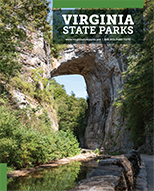Read Our Blogs
From the Archives: A Coal Camp Photo Tour
Week two of closure and we haven’t even begun to scratch the surface of our amazing collections here at the Southwest Virginia Museum Historical State Park. We have more than 4000 historic photographs in our collection, and fortunately, we've just recently finished digitizing them, so we'll be able to share them with you over the next few weeks.

Here in Southwest Virginia, coal mining has been a big part of our history for more than a century. In the first quarter of the 20th century, several large coal corporations built small towns to house the hundreds of miners and their families, towns with names like Dunbar, Exeter and Osaka. These towns, or camps as they came to be known, shared many elements in common, including a school, churches, theater and commissary. We have hundreds of photos of life in these camps, from many donors, including descendants of these miners.
So sit back and enjoy this selection of photos depicting life in a Southwest Virginia coal camp, circa 1920.

This 1923 map of the route of the Interstate Railroad System gives a good overview of the extent of the southwest Virginia coal towns and camps of the time. Big Stone Gap is just west of Appalachia, Virginia.

Stonega, a shortening of "Stone Gap," was the largest and earliest of the camps built by the Virginia Coal and Iron Company. This c. 1924 photo shows the typical linear layout of coal towns, nestled in a hollow; although people still live in some of the old houses, the town's post office closed in 1972.

Dunbar, another Stonega company town. It's easy to see the uniformity of the houses in this photo. The small buildings in front of each one are coal houses, where the coal truck could deposit coal for the family to use. The church follows the same pattern as many other coal towns, basically a prefab design that could be added onto if needed. Many of these churches can still be found dotting the southwest Virginia countryside.

This Baptist Church was located in the small coal camp of Keokee, named for the wife of a coal company operator. Coal camps often had several churches for different denominations, including Catholic for the Eastern European communities such as Hungarian and Italian miner families.

From Inman coal camp comes this photo of a river baptism.

It wasn't all work and no play in the coal camps. Many towns had their own band, scout troops, theater, first aid rescue teams and other recreational organizations. Baseball was known as the miners' sport, and competition with other camp teams could be fierce. The Dorchester coal camp team were winners in the 1909 Fritzi Scheff contest, named for the wife of "Trail of the Lonesome Pine" author and southwest Virginia resident John Fox, Jr.

The theater in Stonega, shown here in 1924, showed the latest movie releases and hosted live performances as well.

Miners were usually paid in scrip, tokens good only in coal company stores. Each coal camp had a commissary, and coal camp community hubs like Appalachia, Virginia, also had stores for miners and their families. The interior of the Keokee camp commissary is shown here, circa 1920s.

Medical care was an important aspect of coal camp life, with mining accidents and chronic illness not uncommon. Stonega, the largest of the coal camps in Southwest Virginia, had a state-of-the-art hospital with the latest equipment and well-educated doctors.

Unfortunately, less pleasant aspects of community life also existed in the coal camps. Camps were segregated in housing location and conditions, recreation, churches and schools. In Derby, this building served as the "colored" school in the 1920s. The Roda coal camp school for the white children can be seen in the opening photo for this blog, circa 1907.
We hope you enjoyed this mini-tour of our Coal Camps photo collection! Stay tuned for another virtual exhibit, coming soon. In the meantime, stay safe.
If you have read the article and have a question, please email nancy.heltman@dcr.virginia.gov.














